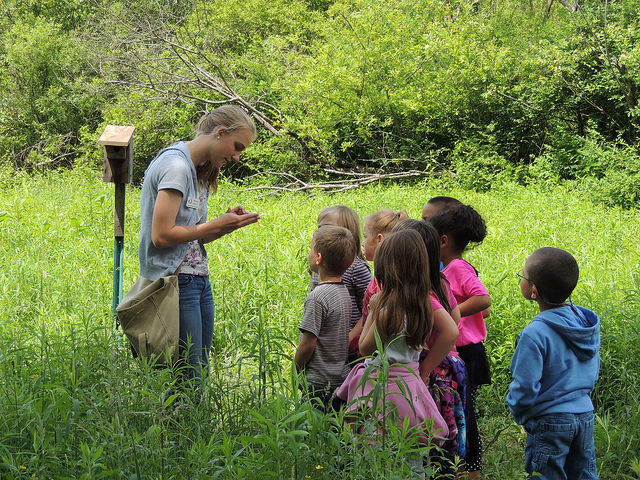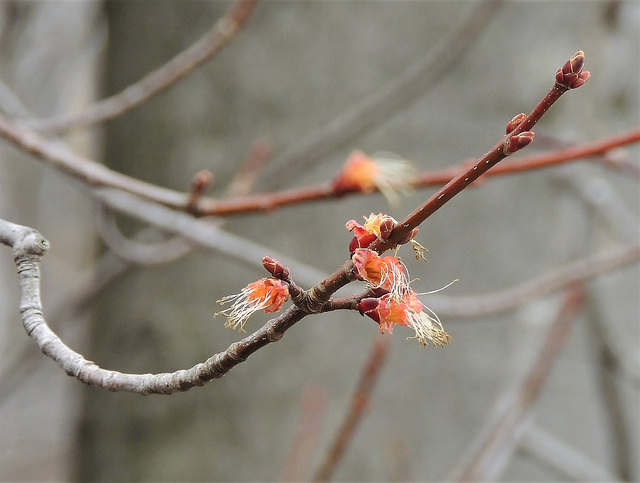During this slow transition between seasons, I look for the first signs of spring. The return of Red-winged Blackbirds, Canada Geese and Turkey Vultures. The start of “see saw” territorial calls of Black-capped Chickadees and early spring blooms. But it is early yet. Mostly life looks dormant. Those that herald spring in boisterous and blooming fashion are still waiting in the wings.
Oh, but if we could only see inside the life of plants. There is movement in the trees, bushes and herbaceous plants that flower or leaf out early. Deep among the roots, the call has been heard to begin growing. Last summer these plants took in water, nutrients and carbon dioxide. Using energy from the sun, they made their own food. That food is glucose, a sugar that feeds the plant and fuels its growth. But plants make more glucose than they can use. As the growing season comes to a close, plants convert glucose to starch and put in into storage in their roots. Underground, it sits all winter. The original root cellar.

Collecting maple sap to make syrup
Now, as the plants sense the lengthening daylight, that starch changes back into glucose and moves up and out to the new growth — the buds. In many plants, the buds were produced during the previous growing season and have been snuggly wrapped up all winter. These tiny packages contain the blueprint of new leaves, flowers, branches and stems. They are waiting for the right time to unfurl to continue the life of plant. The buds contain a lot of information. But they do not contain the energy to grow on their own. For that initial push, before the leaves can begin the production of glucose again, they need the food stored in the roots.
This pull of resources from the plant roots is the start of spring. But it seems a mystery because it happens unseen. Just because you can’t see something, doesn’t mean it is not happening. And it is visible at times. Nowhere is this movement of glucose noticed more than in the collection of maple sap in early spring. We are literally taking a portion of the maple’s investment in its future. We are eating last year’s summer sunshine and rainstorms. Gratefully, there is plenty to share.
This process is the case with plants that live more than one year, called perennials. Plants that live for one year, called annuals, produce seeds to continue their species. These little embryos of a new plant are wrapped up and protected in the seed coat in hopes they will land somewhere fertile to grow into a new plant. They contain their own initial package of energy necessary to create the leaves that will fuel the rest of the plants growth. For the continued growth and life, annuals put their faith in their seeds while perennials put their faith in their buds.
Where do we put our faith? Not our faith as individuals but our faith as a community. Our faith for continued growth and future life. While there are many possible answers to this question, one is children. We put our faith in our children.
We want our children to be successful, not only because they are our children, but are the growth and the life of our future community. We care for them and provide them with the nourishment and nurturing so they grow up to be healthy and strong. We teach them what it means to be a human, who cares for themselves and those around them.
At Audubon, we believe a connection to nature is integral in growing up healthy and strong and the natural world around us is worth caring for. A positive relationship with nature strengthens us physically, mentally and spiritually. And today’s children are going to be tomorrow’s decision makers, choosing how we treat our world, our life support system, so integral to our survival.

A trail guide with school kids on a fieldtrip
At Audubon, much of our program is geared toward children. Little Explorers, provides an introduction to learning about and in nature for 3 – 8 year olds. Nature Play Days provides the space and guidance for kids to learn through play outside. Our school programs provide a connection to nature through the classroom, applying many academic concepts to real life. In the spring, Audubon teems with elementary school students and their accompanying adults on fieldtrips. As part of our partnerships with schools, all are at Audubon to explore, discover and wonder at the natural world.
To make this happen, we train and rely on volunteers called Trail Guides. Trail Guides work with small groups of students to inspire curiosity about the outside world. Serving as a Trail Guide volunteer at Audubon is a rewarding volunteer opportunity. If you have experience or interest in the natural world and working with children, becoming a Trail Guide Volunteer may be for you. If you would like to learn more about this opportunity, you are invited to participate in a New Trail Guide Orientation on Wednesday, March 28 from 10:00 – 11:30 a.m.
Like the plants, many of us have more than we need. More knowledge, more time, more love, more energy. Here is just one way that you can share it to nurture and nourish our future.
Audubon Community Nature Center builds and nurtures connections between people and nature. ACNC is located just east of Route 62 between Warren and Jamestown. The trails are open from dawn to dusk as is Liberty, the Bald Eagle. The Nature Center is open from 10 a.m. until 4:30 p.m. daily except Sunday when it opens at 1 p.m. More information is online at auduboncnc.org or by calling (716) 569-2345.
Katie Finch is a naturalist at Audubon.


Recent Comments